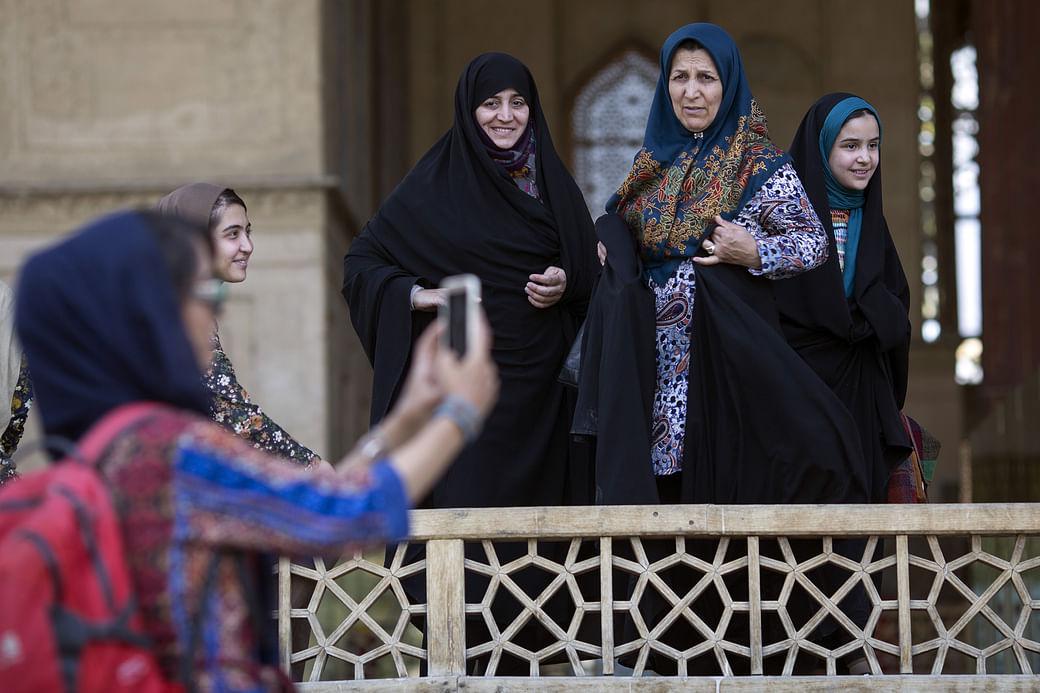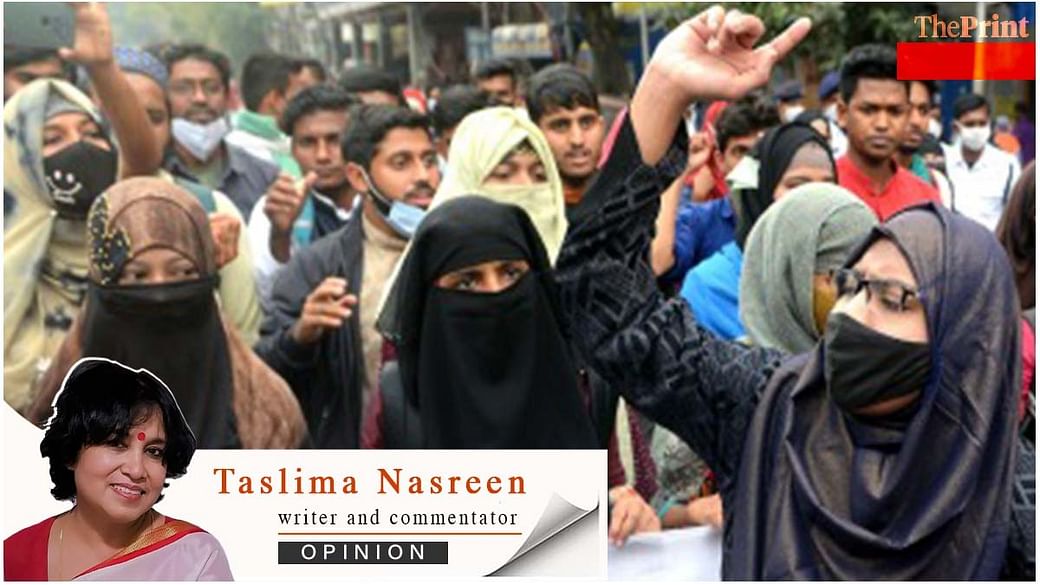
In the Arabic lexicon and the Quran, the word ‘hijab’ means a curtain, not a veil or a scarf. According to Asma Lamrabet, a Moroccan Islamic feminist, the term is reiterated seven times in the Quran, referring to the same meaning each time. “Hijab means curtain, separation, wall, and in other words, anything that hides, masks, and protects something,” she says. Never in Islamic history was this word used for a garment or a piece of clothing.
Product of new culture
The hijab, in its current form, is not older than two decades in India. As late as 2001, when this scribe stumbled upon an online matrimonial ad in which an American Muslim woman had said, “I wear hijab”, he, reasonably well-versed in Islamic idioms, couldn’t help wondering how hijab could be worn at all. He wasn’t aware that the said word had become a terminology that connoted a stylised head bandage worn to emphasise that the wearer belonged to a different religion and community and that she prided in her difference from those around her who did not belong to the same faith.
Although couched in the discourse of modesty, this was clearly a marker of identity, which soon became the uniform for religious assertion in societies where Islam wasn’t the dominant political force. The politics of this sartorial semiotics was neither lost on its proponents nor those who came to resent it.
Whether the case for hijab is argued from the vantage point of religiosity or identity, in neither case the proffered arguments could be regarded as liberal and secular. So, why can’t the liberal-secular intelligentsia tell the supporters of hijab that their insistence on displaying religious symbols in sanitised public spaces like schools is illiberal, un-secular, regressive, and militant? After all, wouldn’t it eventually harm those the most who have the greatest stake in India’s liberal secularism — the Muslim minority? Is it because the liberals, having completely lost the script and unable to fight their own battle, have been counting on the Muslim identitarian politics to keep them in the reckoning? Have they developed the same vested interest in Muslim communalism as did the British earlier?
Not a choice
Two key terminologies that have been bandied about liberally (pun intended) during the ongoing controversy — one in affirmation and the other in negation — are ‘choice’ and ‘patriarchy’. It has been argued that wearing any dress is a matter of individual choice. Of course, it is. However, one might ask whether the votaries of the hijab concede this right to all women to wear any dress of their choice. Would the very girls who have been exercising their “individual choice” to wear the hijab to school be able to walk freely, if they so chose, without it through their Muslim neighbourhoods and not compromise their families’ honour or invite opprobrium on themselves?
Hijab is not an individual choice, it’s a communal compulsion.
The pace at which it has been spreading hints that the day is not far when Muslim women not conforming to it may no longer be recognised as Muslims. This is what was going to happen if the Karnataka High Court’s judgement had gone the other way.
Equally insidious has been the narrative that the assertive display of the hijab is a setback to Islamic patriarchy. Far from it. Both in form and content, and very consciously too, this trend signifies the revival of orthodoxy, including its patriarchal presumptions. The religious sanction for man’s supremacy and his right to decide for women is not being questioned. Instead, what rankles is the loss of political supremacy of the supposed Muslim community. Muslim women, too, are supposed to have suffered from this loss.
Therefore, they, instead of seeking equality with men, are engaged in the higher pursuit of reviving supremacy over other religions. Their gender is not only secondary to Islam, but, as seen in the use of the hijab as a tool of religious assertion, also deployed in service of the religion. The capability and agency gained as blessings of education and modernity are ploughed back into the religious-political discourse.
Towards communal visibility
Another myth being circulated is that the hijab is an enabler for education, which is to say that had it not been for the hijab, Muslim girls wouldn’t be able to go out for studies. The fact, however, is that till the very end of the 20th century — before it became a common sight — most Muslim girls attended schools and colleges dressed in the same attire as other girls. The same trend would have continued if religious radicalisation had not permeated the socio-political atmosphere.
Therefore, before educating Muslim women on the hijab, so that a case could be made for the latter’s essentiality, our liberal-secular intelligentsia should have done better to wonder why an outer covering over the regular dress, which was not considered necessary earlier, became a precondition for going for studies.
This is despite the fact that the nature of the Muslim woman’s modest dressing underwent a change through the years. Before the head-wrap became trendy wear, there were three moot questions — Should a Muslim woman freely go out of her house? Should her face be covered with the naqaab? Can she, like men at home, wear Western attire?
The new hijab took care of all the questions. Women could go out. The face was exposed, but instead, the head and the neck had to be covered in a particular style, and, if topped with the hijab, Western dresses such as jeans and tee shirts became halaal.
Hijab replaced the earlier invisibility of the Muslim woman with a hypervisibility of her religious identity. Whether this identity should compulsively be asserted in public spaces is the question that Indian Muslims need to resolve wisely.
